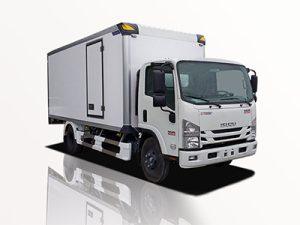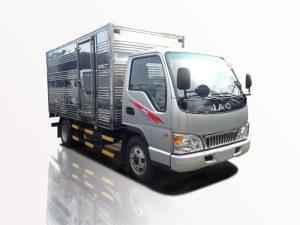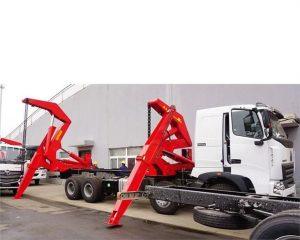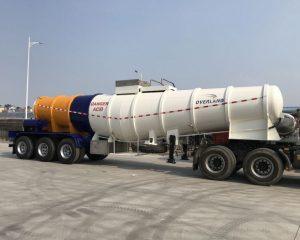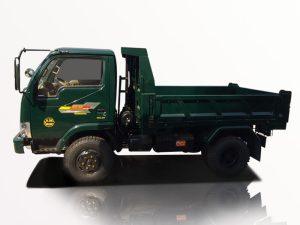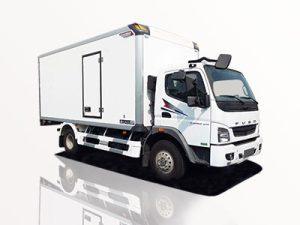Monday to Saturday - 8:00 -17:30
Crane Fire Trucks: The Essential Rescue Machines of Modern Firefighting
Firefighting has evolved significantly over the years, and one of the most remarkable advancements in this field is the introduction of crane fire trucks. These specialized vehicles combine the functionality of traditional fire trucks with the capabilities of a crane, making them indispensable for tackling high-rise fires and performing rescue operations. In this article, we will explore the features, benefits, and various applications of crane fire trucks, and provide practical tips for using them effectively.
What is a Crane Fire Truck?
A crane fire truck is a specialized firefighting vehicle equipped with a large crane arm that can extend vertically and horizontally. This vehicle is designed to aid in firefighting operations, especially in high-rise buildings where traditional firefighting methods may fall short. The combination of a fire pump, water tank, and crane capabilities allows firefighters to access difficult-to-reach areas and perform rescues more efficiently.
Key Components of a Crane Fire Truck
- Crane Arm: A telescopic boom that can be extended to reach higher floors of buildings.
- Water Pump: A powerful pump to deliver water at high pressures for firefighting.
- Water Tank: A reservoir to store water for immediate use.
- Firefighting Equipment: Hoses, nozzles, and other tools specifically designed for fire suppression.
- Control System: An operator’s console that allows firefighters to control the crane precisely.
The Importance of Crane Fire Trucks in Firefighting
With urban areas becoming increasingly populated and more skyscrapers rising, the need for efficient firefighting solutions has never been greater. Crane fire trucks are crucial in tackling the challenges posed by high-rise buildings.
Advantages of Using Crane Fire Trucks
1. Enhanced Reach
The primary advantage of crane fire trucks is their ability to reach significant heights quickly and safely. Firefighters can deploy hoses from the crane’s height, minimizing the risk of injury.
2. Quick Deployment
Crane fire trucks can be set up quickly at the site of an emergency, providing immediate access to water and equipment. The crane can maneuver around obstacles, which is especially beneficial in congested urban areas.
3. Versatility
These trucks can be used for various operations beyond firefighting, such as rescuing stranded individuals or performing inspections on high-rise structures.
4. Safety Features
Modern crane fire trucks come equipped with advanced safety features, including stabilizers and automatic leveling systems, to ensure safe operation even in challenging conditions.
Types of Crane Fire Trucks
1. Aerial Ladder Fire Trucks
Combining the traditional ladder truck with crane functionality, these vehicles have a ladder that can extend vertically and horizontally to reach heights safely.
2. Articulating Boom Fire Trucks
These trucks feature articulated booms that can maneuver around obstacles, providing access to hard-to-reach spaces in urban environments.
3. Telescoping Boom Fire Trucks
Telescoping boom trucks have a long, extendable arm that can reach significant heights, making them ideal for high-rise fire operations.
4. Platform Fire Trucks
These cranes come with a platform at the end of the boom that can carry fire personnel, equipment, or even injured individuals, allowing for safe airlifting.
Practical Applications of Crane Fire Trucks
Crane fire trucks are utilized in a variety of scenarios. Here are some practical examples of their applications:
High-Rise Fires
One of the most common uses of crane fire trucks is during high-rise fires. With their extended reach, fire crews can access upper floors quickly, allowing for efficient firefighting efforts and rescue operations.
Rescue Operations
In emergencies where individuals are trapped in high locations, crane fire trucks can be deployed to extract them safely. Using the platform, firefighters can reach and uplift people from dangerous situations.
Building Inspections
After a fire incident, crane trucks can assist in thoroughly inspecting the damage and assessing structural integrity. Their ability to provide aerial views is essential in these assessments.
Training Exercises
Fire departments often use crane fire trucks in training exercises to prepare firefighters for real-life high-rise scenarios. Simulating these conditions enhances their readiness and effectiveness during emergencies.
Operational Guidelines for Crane Fire Trucks
To maximize the effectiveness of crane fire trucks, it is essential to follow best practices for operation:
1. Training and Certification
Only trained and certified personnel should operate crane fire trucks. Regular training sessions ensure that firefighters are familiar with all controls and safety measures.
2. Pre-Operation Checks
Before any operation, conduct a thorough inspection of the crane and firefighting equipment to ensure everything is working correctly. This includes checking hydraulic systems, water tanks, and emergency features.
3. Stabilization
Always stabilize the crane properly before deploying the boom. Failure to do so can result in accidents and severe consequences.
4. Emergency Protocols
Establish clear protocols for emergency situations, including evacuation plans for personnel in the event of a malfunction.
5. Communication
Maintain clear communication among team members during operations. Use radios or other communication devices to coordinate tasks effectively.
Frequently Asked Questions (FAQs)
1. What is the average height that a crane fire truck can reach?
Most crane fire trucks can reach heights of 100 feet or more, depending on their design and capabilities. Some specialized models can reach up to 150 feet.
2. How does a crane fire truck differ from a traditional fire engine?
While traditional fire engines are primarily designed for firefighting, crane fire trucks combine firefighting capabilities with crane technology, allowing them to access hard-to-reach areas and perform rescues at height.
3. Are crane fire trucks used only for firefighting?
No, crane fire trucks are versatile and can be used for various operations, including rescues, inspections, and training exercises.
4. What kind of maintenance do crane fire trucks require?
Regular maintenance includes checking hydraulic systems, water pumps, and safety features. It’s essential to conduct pre-operation inspections to ensure that the truck is in good working order.
5. Can crane fire trucks operate in adverse weather conditions?
Crane fire trucks can operate in various weather conditions, but safety protocols should always be followed. Extreme winds or heavy rain can impact stability and performance.
6. How can fire departments fund the purchase of crane fire trucks?
Fire departments can explore grants, government funding, and partnerships with local businesses to acquire funds for purchasing crane fire trucks. Additionally, budgets may be allocated from municipal funding for firefighting equipment.
The Future of Crane Fire Trucks
As firefighting technology continues to evolve, so will the design and capabilities of crane fire trucks. Innovations in materials, computer systems, and safety features will enhance their effectiveness and efficiency in emergency situations. Fire departments must stay informed about advancements to ensure their teams are equipped with the best tools available.
Innovations on the Horizon
Some exciting developments include:
- Drone Integration: Utilizing drones for aerial assessments before deploying crane units.
- Advanced Materials: Lightweight but durable materials for better performance and fuel efficiency.
- Automation: Implementing automated systems for more precise crane operation, especially in complex environments.
Conclusion
Crane fire trucks represent a significant advancement in firefighting technology, offering unique capabilities essential for modern emergency response. Their operational effectiveness, safety features, and multifunctional design make them crucial for tackling the challenges posed by high-rise structures and complicated fire incidents. As technology continues to improve, the role of crane fire trucks will undoubtedly expand, making firefighting more efficient and safer for everyone involved.


